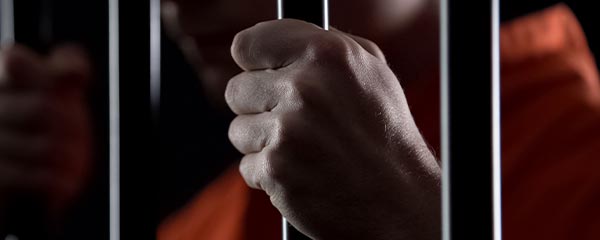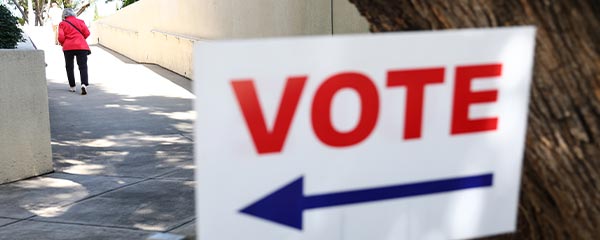There was a significant emphasis on crime in this year's preelection coverage and commentary. (Headlines proclaimed, "Crime is the dark horse issue of this election," "Midterm voters key in on crime" and "Rising crime nationwide fuels midterm elections.) Political ads in states with competitive races featured grainy surveillance footage capturing crimes being committed -- with accompanying and often dubious assertions that such incidents resulted from the opposing party's malfeasance.
Preelection polling, for its part, showed crime was important to voters, but not the most important. Crime was essentially tied for second with abortion in terms of being "extremely important to the vote for Congress this year" in Gallup's October polling. Pew Research found in October that violent crime was tied for fifth out of a list of 18 possible issues in terms of perceived importance to midterm voting. Other polling confirmed that crime generally remained below other issues -- particularly the economy -- in voters' concerns.
How much crime actually ended up being a critical issue in the election is difficult to pinpoint. When the dust cleared, abortion, the economy and the state of democracy appeared to get the most attention as key issues driving voting decisions. The National Election Pool survey, for example, gave voters five issues and asked them to choose which was most important. Two stood out above the rest -- inflation and abortion, leaving crime essentially tied with gun policy and immigration. If we combine crime and gun policy, the total is below the top two issues, but not by much.
Public's Perceptions of Crime as an Issue Up on Some, but Not All, Measures
Regardless of crime's eventual impact on voting, we have clearly seen some significant upticks over the past year or so in the public's concerns about crime.
Personal worry about crime increased to its highest level since 2016 in Gallup polling earlier this year. Americans' satisfaction with the nation's policies to reduce or control crime was lower than satisfaction with almost any other issue in a list included in Gallup polling conducted in January of this year.
My colleague Megan Brenan recently reviewed Gallup data showing a significant surge in the perception that crime is increasing, both in local areas and in the U.S. The view that crime is increasing locally is now at the highest point in Gallup's five-decade history of asking the question. (The key here is the trend on this measure. In absolute terms, Americans have for decades exhibited a marked tendency to say that crime is increasing rather than decreasing, year in and year out.)
We don't, however, see a significant increase in mentions of crime in answers to Gallup's top-of-mind, most important problem question. Four percent of Americans mentioned crime or violence in Gallup's October survey, about where it has been since May. That's not far from the 2.4% average in mentions of crime since March 2000. From September 1993 through early 2000, by contrast, significantly larger percentages of Americans named crime or violence as the top problem -- including 52% who mentioned crime in August 1994.
Plus, the percentage of Americans reporting having been the victim of at least one out of a list of crimes in Gallup's personal victimization question hasn't shown much change, at least as of 2021 when the question was last asked.
Perceptions of Crime Don't Necessarily Match Reality
Precise estimates of trends in the actual incidence of crime ("in the real world") are more difficult to ascertain than might be thought. Scholars typically point out that crime rates can vary widely depending on the type of crime involved, the specific area under consideration and the time frame used for reference. Crime data can be dated, and what people perceive in real time isn't reported officially until the next year. The crimes reported by news media most often reflect high-visibility crimes such as mass murders or abductions. These reports are in turn absorbed by average Americans but may not be reflective of the incidence of crime in its totality.
There are also varying systems for measuring crime at the national level. The FBI crime reporting system, now under revision, depends on law enforcement agency reporting, while the Bureau of Justice Statistics uses a crime victimization survey. The Major Cities Chiefs Association survey reports, as the title suggests, crime statistics from the nation's largest cities.
Data from the Bureau of Justice Statistics (BJS) and incomplete data from the FBI show little substantive change in crime in 2021 compared with 2020. As the BJS reported, "The total violent victimization rate, which includes victimizations reported and not reported to police, in 2021 was 16.5 victimizations per 1,000 persons age 12 or older (not shown). This rate was not statistically different from the rate in 2020. The rate of property victimization (reported and not reported to police) in 2021 was 90.3 victimizations per 1,000 households, which was not statistically different from the 2020 rate."
This is similar to the results from Gallup's own crime victimization survey, which, as noted, showed very little change in individual reports of being the victim of crime as of October of last year. Other data show the murder rate was up significantly in 2020, but the Bureau of Justice Statistics surveys don't show an increase in 2021. The Major Cities Chiefs Association data indicate that violent crime may have increased in big cities in the first half of this year.
All in all, these official data reflect a complex picture, but as of 2021 don't show the type of sharp uptick in crime Americans appear to perceive. Americans' perceptions of the increase in crime may thus reflect the reality going on in very recent months (not yet captured in official statistics) and may also reflect media reports and other input not representative of the total big picture. Plus, as I'll explore below, they reflect politics.
Americans' Views of Crime Deeply Affected by Their Underlying Partisanship
Americans' perceptions of crime are significantly affected by partisanship. Responses to many survey questions about crime vary, in some cases dramatically, based on underlying political identity. It's probable that these differences reflect party positioning and political campaign strategies as much as they do sharp differences in what partisan groups actually experience in the world around them.
As Gallup's Megan Brenan pointed out in her analysis of Gallup data, perceptions of the increase in crime shift up and down regularly with changes in the party of the president. Republicans become more likely to say crime is increasing when there is a Democratic president in office. Democrats become more likely to perceive an increase in crime when there is a Republican president. It's doubtful that these shifts reflect actual, abrupt changes in real-world crime. The changes may instead indicate that partisans are more sensitive to crime news when the opposing party is in power, or that partisans simply assume things are bad when the out party is in charge.
With a Democratic president in the White House now, there is a yawning 34-percentage-point gap between Republicans and Democrats in their perceptions that U.S. crime is increasing (95% of Republicans say it is, compared with 61% of Democrats). And there is a 31-point partisan gap in respondents' perceptions that crime is increasing in their local area (73% for Republicans, 42% for Democrats). These partisan gaps are the biggest Gallup has ever recorded.
Worry about crime is currently also higher among Republicans than among Democrats. The perceived importance of crime as an election issue is much higher among Republicans than among Democrats. Relatively few Americans of any political persuasion mention crime as the nation's top problem, but such mentions are nonetheless more frequent among Republicans than among Democrats.
Partisanship is less apparent when questions are asked about personal crime victimization. In Gallup's October 2021 survey, Republicans and Republican-leaning independents were six points more likely than Democrats and Democratic-leaning independents to report having been the victim of identity theft. But partisan differences across the other crimes tested were two points or less.
In other words, reports of actual personal experiences are apparently more veridical and less subject to interpretation through partisan lenses.
Perceptions Are Important, Regardless of Their Origin
All in all, Americans' perceptions of crime can reflect the reality of actual crimes being committed around them -- but can also reflect a number of other factors. Politics plays a role, as do what is being reported in the news and social media, individual differences in how crime is defined, and what Americans are using as their reference time period.
Regardless of what lies behind Americans' perceptions of crime, however, those perceptions are critically important to measure and to analyze. As sociologists W. I. Thomas and Dorothy Thomas, almost a century ago, codified in what has become known since as the Thomas theorem: "If men define situations as real, they are real in their consequences."
In short, if the public perceives that crime is increasing in their local area or in the nation, then those perceptions can have very real consequences -- in terms of personal worries and anxiety, in terms of voting, in terms of support for local police budgets, and in terms of affecting daily behavior including such things as purchasing dogs, guns and home safety equipment.
Official government agencies themselves rely on surveys to estimate crime victimization, underscoring the additional value that representative survey sampling provides, particularly since many instances of crime may not be reported to the authorities.
Crime is an enduring component of American society. Americans' perceptions of the crime problem are complex, just as determining what causes crime and the best approaches to reducing crime constitute ongoing challenges for society. But we know that asking Americans themselves to report their views on crime is an important element of our overall approach to addressing this major societal challenge.
To stay up to date with the latest Gallup News insights and updates, follow us on Twitter.




